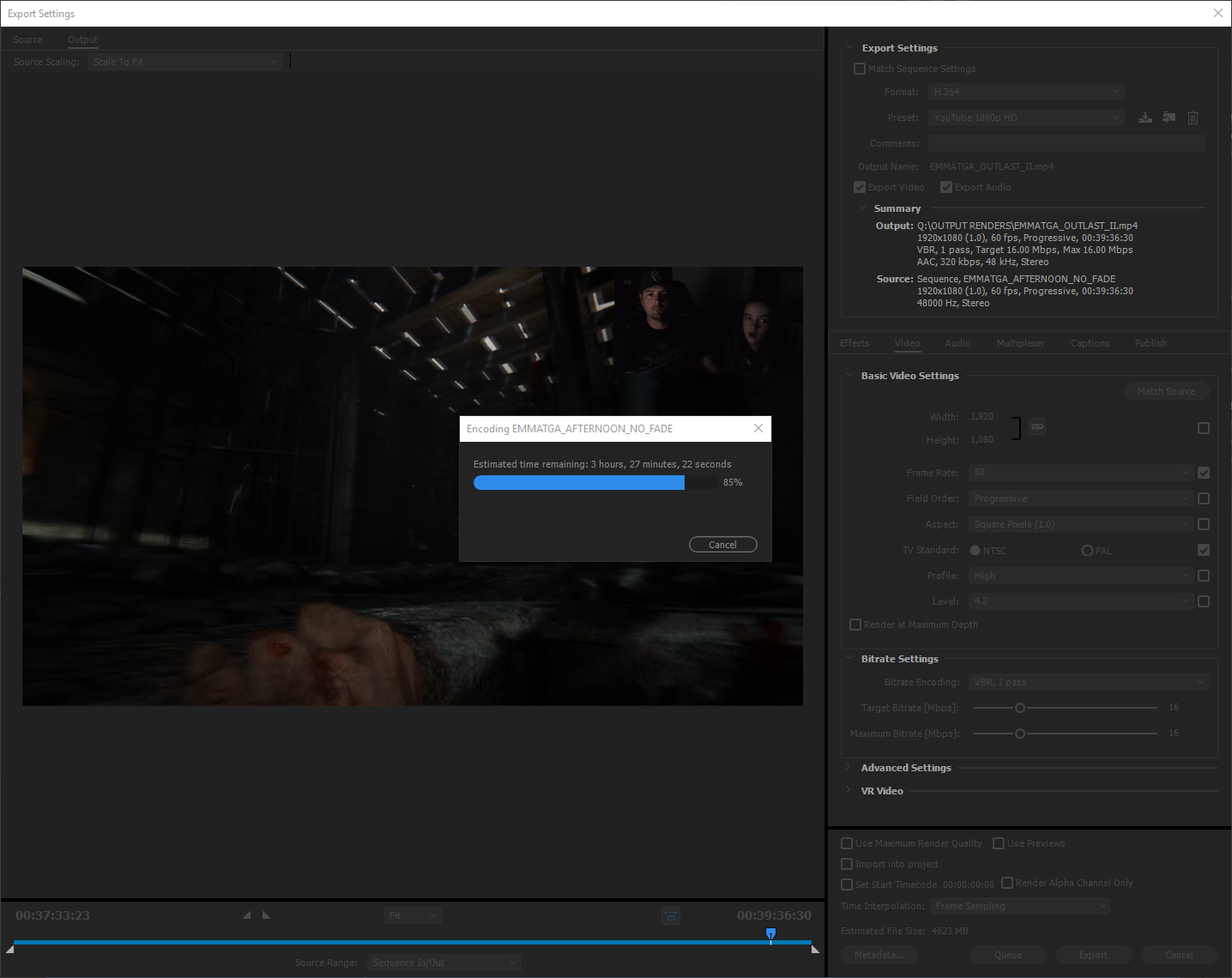
If one doesn’t work try the other. The following are suggestions some people have reported to improve the situation: Make sure the color depth of the stills is 32 or 24 bit. It is an inconsistent problem and difficult to reproduce. Some people experience this when putting a large number of stills on the timeline.
This isn’t a new feature, it first showed up in Premiere CS6. It allows you to create better quality output by avoiding recompression where possible. Smart rendering is, essentially, media optimization before and during editing. Adobe After Effects, Premiere, and Media Encoder do not render recent AE Failed to Connect.I was exploring Adobe’s website for Premiere and discovered Smart Rendering. Adobe Media Encoder CS6 Adobe Prelude CS6 photoshopdva. Large images often cause the problem.

It rendered a 900+ MB video file in 15 mins on my. Be interesting.Kevin Monahan, from Adobe, summarized the steps of Smart Rendering:Use Adobes Media Encoder CC for quality rendering and it is faster than Premieres native export option. Also - no-one would render out of Premiere, you’d use Media Encoder, which would likely be faster. A better comparision would be a PC with a Nvidia graphics card (which Premiere is optimized for).
Adobe Premiere Pro Cs4 Render Faster How To Ingest Media
As a note, DV footage will also Smart Render.You can also capture this footage natively to these codecs while shooting with certain cameras or recording systems (Atomos devices, etc.). Transcode any Long GOP footage to ProRes, DNxHD/HR, or GoPro Cineform during ingest or prior to importing the footage (see this article which shows you how to ingest media automatically in the background while you begin editing). Adobe Media Encoder: Preferences > General Premiere Pro: Project Settings > General (Mac users should pick Metal) Enable GPU acceleration, if available, in the following places:

Render the entire timeline before attempting to export. Render any clips you have added an effect to whenever you get a free moment, ideally when you are taking a break. Smart Rendering is supported for both MXF and QuickTime wrappers.
DNxHD & DNxHR in MXF (Format > DNxHR / DNxHD MXF OP1a) AVC-Intra in MXF (Format > MXF OP1a & Format > AS-11) You can even create proxies for them if you have an underpowered computer system and need better fluidity when editing.”Here’s a link that explains other ways to speed rendering and export.Codecs in an MXF wrapper that support smart rendering You drop fewer frames, and can view in a higher resolution with these intraframe codecs. This ensures you are merely copying files rather than processing and encoding the files.Kevin adds: “I should also point out that it is a much nicer editing experience when cutting with ProRes or the like, over Long GOP footage like H.264 or AVCHD. Check the “Use Previews” checkbox in the Export Settings dialog box, as well.
(which never ceases to make me smile by the way)This is mostly what is explained in this article EXCEPT for the transcoding part in the beginning to one of the codecs you listed.So my question is, is transcoding only necessary for highly compressed formats like drone footage or other formats that shoot smaller files sizes due to compression? Because I feel like I’m getting the smart rendering benefit without the transcode step but as mentioned my footage is usually not a compressed format to begin with. My workflow for years has been this:– go into sequence settings and switch “Editing Mode” to Custom– edit native R3D files regardless of size (4k, 5k, 6k etc)– scale them down in the sequence to whatever percentage fits them to 1920×1080– render areas of the sequence when necessary as I edit them– output to same format as preview files (ProRes 4444) by clicking the “match sequence settings” button in the export dialog box as also making sure to check the “use previews” boxThe export usually takes less than 2 min depending on length. XDCAM HD (Format > MXF OP1a & Format > AS-10)NOTE: To activate smart rendering for codecs in an MXF wrapper, check the “Enable smart rendering codec” option found under the Video settings tab of the preset.Codecs in a QuickTime wrapper that support Smart Rendering:NOTE: Smart rendering for QuickTime codecs is automatically enabled any time the source settings match the export settings.This is part comment part question. MXF OP-Atom AVC Intra to MXF OP1a AVC-Intra


 0 kommentar(er)
0 kommentar(er)
